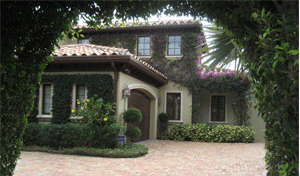Top Six Options to Invest in Real Estate in the U.S.?
- Written by Admin TOA
- Published in How to Invest in the U.S.
The seeds of the economic crisis, which started in the United States and then encompassed the globe, were sowed with the real estate sales boom of 2005-2006.

Ahmet Dagistanli.
The seeds of the economic crisis, which started in the United States and then encompassed the globe, were sowed with the real estate sales boom of 2005-2006. The bank loans that were issued without consideration to the buying power of the consumer, the new housing projects that went up one after the other and the low interest policy that was in place with the Federal Reserve of the United States all helped people gain the house of their dreams in a very short period of time.
The houses that were brought gained excessive value in a very short time, making their owners profit. Citizens took the difference between the value of the house and the loans that they had taken out as further credit and they spent this easy money without a second thought. Some used this additional money to buy another home, and some used it to buy a new car. While taking out these new home loans, these loans that were based on declared amounts were issued on the belief that the value of the homes would only increase. Those who knew that these increases would not last for long tried to warn the public that there was a bubble forming in home prices; those loan associations that did not want to lose this easy money continued to create and market these loans based on the real estate sector.
The loans’ interest rates started to rise after a while, increasing the number of homeowners who could not make the payments. In 2007 alone, the number of home foreclosures rose to 1.3 million. This was a 79% increase from the year before.
For those homeowners who had refinanced, due to the increase in their home values, in order to pay off their existing loans, loan options were limited and interest rates had gone up. Therefore homeowners saw that the mortgages on their existing homes were now higher than the market value of that home. The largest money lending finance companies in the United States were negatively affected in this market.
As of July 17, 2008, the losses of these finance companies were announced to be around 435 billion dollars. The real estate sector, which is seen as the cause of this economic crisis, is still the choice for conscious investors. Especially now that the prices of real estate are falling, there are great opportunities for those who want to invest, and experts are saying that for those who are looking for long term investments, real estate is one of the best.

A Palm Beach house.
Ahmet Dağıstanlı, a partner in the Global Citrus Realty company, which provides real estate buying and selling, management, legal and financial services in New York and New Jersey, says that for those thinking in terms of long term investments real estate provides great opportunities.
FOR THOSE WHO WANT TO BUY REAL ESTATE
According to Dağıstanlı, these are the following options for those who would like to invest in real estate in the United States.
- Apartment buildings (Those buildings with 5 or more units.)
- Mixed-use buildings (Bottom floor stores, top floors for residential.)
- Office buildings.
- Shopping centers (Requires large or small scale investments.)
- Investments such as hotels or motels.
- One or a maximum of four independent dwellings bought with financing.
In the United States, buildings with five or more units are sold with commercial loans. The dwellings sold as a “family house” or a “condominium” are sold with individual home loans. Dağıstanlı recommends that investors invest in apartment buildings with at least five or more units. He states, “The income and expenditure of these buildings on paper can be proved at 90 percent. Everything is down on paper, in a way that the investor cannot be misled. How much the taxes are, how much will be spent on repairs, how much rent it will bring in.” Dağıstanlı goes on to say that the buildings are put on the market with values called the “Cap Rate” – if you had bought the property with cash, what kind of interest that building would have brought you - and he underlines the fact that each state and each neighborhood has a different Cap Rate. In New Jersey this rate is 7-9%, and in New York the rate varies between 5-7%.
Even during an economic crisis, finding buildings that can make back their original cost within 10-15 years and buying these buildings with a certain amount of down payment and financing, and then to pay off the financing with the income that they generate, is a commonly used method. It is possible to find these buildings, which are appropriate for a minimum of a five-year, but ideally a ten-year investment, in the northern areas of New York and New Jersey. It is possible to take out title deeds for each of the units in these buildings as well.
For the condominium property type, also existent in Turkey, in order to take out independent title deeds for each apartment, the building has to be the type where at least three families can live.
HOW CAN THOSE LIVING OUTSIDE OF THE UNITED STATES BUY REAL ESTATE?
The real estate market attracts the interest of investors living outside of the country as much as the investors in the United States. Dağıstanlı stresses that it is not difficult for investors living outside of the country to invest in real estate. Those who have 10 year, multiple entry visas as well as those with the visas known as B-1 or B-2 (Work/Tourist) can easily invest in real estate in the United States. If the foreign investor wants to buy real estate and wants to use financing in acquiring this real estate it is enough that he provide information regarding income from outside of the United States, assets and bank reference letters. Dağıstanlı says that the United States has a structure that makes it easy for foreigners to invest, while the system in Turkey, because there are no independent firms that report on individuals credit situations, does not, as a system, make things easy. Dağıstanlı stresses that Turkish banks need to aid their investing clients in order to fill this void.
For those who want to buy residential or commercial properties in the United States, it is not enough for them to show their personal assets in Turkey. For those who have incomes in the United States, it is possible for them to deduct part of their mortgages from their annual taxes. However, the investor who lives outside of the United States adds up all of their payments and spending, writing them off as expenses, and then after the sale of the said property deducts those expenses from the income and pays tax on what is left.
REAL ESTATE TAX RATES
One of the most important points that foreign investors have to pay attention to in the United Stated is the tax system. In the United States each municipality has a tax rate designated for the buildings within its limits. These calculations are done automatically. The tax that you will pay comes out of a calculation regarding land cost + the building cost of the structure times a certain coefficient. For example, if the value of the home you bought is $450,000 and the tax coefficient for that area is 2 %, then the tax on that property is $9,000 per year. For those who are interested in investing in this type of real estate it is important to work with an accounting specialist who is United States licensed.
Dağıstanlı points out that the “1031 Tax Exchange” law provides attractive advantages for investors. According to this law, an investor who buys a commercial building for 10 million dollars and then sells it for 15 million dollars, can reinvest the 5 million dollars that is made into another building, therefore delaying the taxes owed on that transaction. In this way the investor can use the taxes owed on the money that has been made as credit.
HOW CAN THE BUILDING BE OPERATED AND MANAGED?
You have invested in the real estate sector of the United States. However, who is going to keep an eye on that building for you? Dağıstanlı points out that there are Property Management firms that were founded in order to operate and manage buildings and to protect the rights of the building owners. These firms rent out the units in the building, they collect the rents, they pay the taxes, and they execute any repairs that may be needed. Dağıstanlı says that at Global Citrus Realty, not only do they provide investors with these services, but with the United States licensed lawyers in their New York offices, they also provide legal advice on real estate investments and when needed consultancy regarding getting residence and work permits for the United States.
DOCUMENTS REQUIRED FROM FOREIGN INVESTORS WANTING TO BUY REAL ESTATE IN THE U.S.
• Income: A copy of the latest payroll slip from their place of work and a letter from the employer as to the person’s position in the firm and the dates that they have worked there.
• Assets: The individual’s personal assets and their credit worthiness. A bank statement going back three or four months showing the state of the cash finances.
• A letter from the bank showing the person’s personal credit card limits, whether or not they have been making regular payments, amount of debt and their monthly minimum payment amounts.
CONTACT
For any further questions you may have regarding real estate investments, you may contact Ahmet Dağıstanlı, partner and manager of Global Citrus Realty, a firm that focuses on real estate financing, at This email address is being protected from spambots. You need JavaScript enabled to view it..
EXISTING HOME SALES
Year U.S. Northeast Midwest South West
2005 7,076,000 1,169,000 1,588,000 2,702,000 1,617,000
2006 6,478,000 1,086,000 1,483,000 2,563,000 1,346,000
2007 5,652,000 1,006,000 1,327,000 2,235,000 1,084,000
Seasonally Adjusted Annual Rate
2007 Sept 5,110,000 910,000 1,220,000 2,060,000 930,000
2007 Oct 5,060,000 920,000 1,210,000 2,050,000 880,000
2007 Nov 5,020,000 890,000 1,190,000 1,990,000 950,000
2007 Dec 4,910,000 840,000 1,160,000 1,960,000 950,000
2008 Jan 4,890,000 800,000 1,210,000 1,950,000 930,000
2008 Feb 5,030,000 890,000 1,240,000 1,990,000 920,000
2008 Mar 4,940,000 910,000 1,170,000 1,920,000 940,000
2008 Apr 4,890,000 870,000 1,100,000 1,920,000 1,000,000
2008 May 4,990,000 910,000 1,160,000 1,910,000 1,020,000
2008 Jun 4,850,000 850,000 1,110,000 1,860,000 1,030,000
2008 Jul 5,020,000 910,000 1,130,000 1,850,000 1,130,000
2008 Aug r 4,910,000 850,000 1,140,000 1,860,000 1,070,000
2008 Sept p 5,180,000 840,000 1,190,000 1,900,000 1,250,000
vs. last month: 5.5% -1.2% 4.4% 2.2% 16.8%
vs. last year: 1.4% -7.7% -2.5% -7.8% 34.4%
Source: ©2008 National Association of REALTORS®
Last modified onSaturday, 06 May 2017 10:07
Latest from Admin TOA
- The Young Star of the Gastronomy World Is The New Owner of Samdan
- From Dream to Reality, from Muş to Illinois: Zellano Home, the Largest Furniture Store Under One Roof in the USA!
- 300 migrants to be housed at shuttered Catholic church on Northwest Side in Chicago
- Turkish Philanthropy Funds Hosts 2024 Innovation and Social Impact Summit
- Turkish Stand-Up Sensation Hasan Can Kaya Embarks on U.S. Tour with Art Evi Production, in212 Production, and TAAS New York
